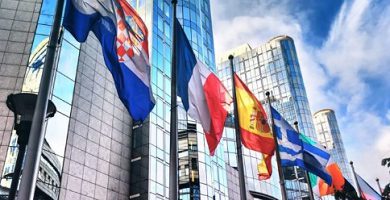What is noise pollution?
We explain what noise pollution is, what are its causes and consequences. Also, how to avoid it and some examples.
-
What is noise pollution?
The presence of annoying, deafening or constant noise, as well as the simultaneous proliferation of excessive noise in a given area, thus negatively affecting the quality of life of human beings and children is called noise pollution, noise pollution or hearing pollution. animals.
While sound does not accumulate and endures as other forms of pollution do , generating long-term damage, the presence of sound contaminants has a direct and immediate impact on the life around them .
Certain noise levels are unavoidable in the contemporary way of life, product of industrial activities, means of transport or simply of the joint life of thousands of people.
However, when these levels reach considerable magnitudes or are so numerous that together they exceed what the ear can tolerate, they are considered a form of physical, emotional and psychological damage that requires action . That is why it is called noise pollution.
In fact, there are international organizations that warn about the gradual loss of the hearing capacity of the human being , and some reports from organizations such as the WHO consider 70 decibels (dB) as the limit of tolerable noise, although the ideal for Human rest and communication is 55.
An estimated 80 million people are constantly exposed to environmental noise exceeding 65 dB, according to studies by the European Union in 2005.
-
Causes of noise pollution

Many contemporary human activities are associated with noise generation , such as industrial extractions; the large manufacturing machinery; small, medium and large-scale transport vehicles; the musical concerts; the movie theaters; Even the simultaneous presence of a large number of people in a tiny environment can be considered a source of noise pollution.
Despite this, few measures are taken in this regard , and especially the individuals who live in the big cities are exposed to pernicious levels of noise on a daily basis.
-
Consequences of noise pollution
Some possible consequences of constant exposure to high levels of noise pollution are:
- Sociocusis . A slight damage to our auditory system that reveals the appearance of a constant beep after having subjected it to high sound levels. This effect usually happens with days, but the abuse of these conditions will lead to a decrease in hearing capacity and eventually deafness.
- Communicative interference . At higher levels of noise pollution, the more difficult oral communication is made, since our ears cannot discern some sounds from others, but the brain must filter between the amount of recorded sounds, the one that interests you.
- Physical effects . Beyond hearing damage, exposure to major sources of noise pollution produce certain physiological effects, such as pupil dilation, pulse acceleration, increased blood pressure and headaches, increased muscle tension and other stress symptoms .
- Psychological effects . Noise is highly harmful to mental and emotional health, as it can cause insomnia, fatigue, stress , depression , anxiety , irritability, isolation and lack of concentration, as well as learning and verbal communication defects in children.
-
How to avoid noise pollution?

Noise was not considered an environmental pollutant until recently, despite the presence of large industrial developments in various regions of the world. Since the beginning of the millennium (2000), numerous organizations and states have agreed to create legislation around noise, which has led to the emergence of regulations and legal codes to protect people from excessive noise .
However, many of the measures against noise remain unique. In environments of high presence of noise enterprises must provide their employees hearing protection equipment and must use insulating materials to prevent waves sound from spreading outside the enclosure and isolate industrial operations to remove them from the places where people live .
On the other hand, the use of earplugs and acoustic barriers in homes is a booming practice in various regions of the world.
-
Examples of noise pollution
Some examples of noise or hearing contamination are:
- Aircraft takeoff at airports, and presence of other combustion vehicles such as motorcycles without an exhaust filter.
- Concerts and other outdoor events equipped with loud speakers.
- Industrial operations or street repair (hydropneumatic drills) in the city.
- Wind farms in the fields (usually produce noises when turning the blades).




